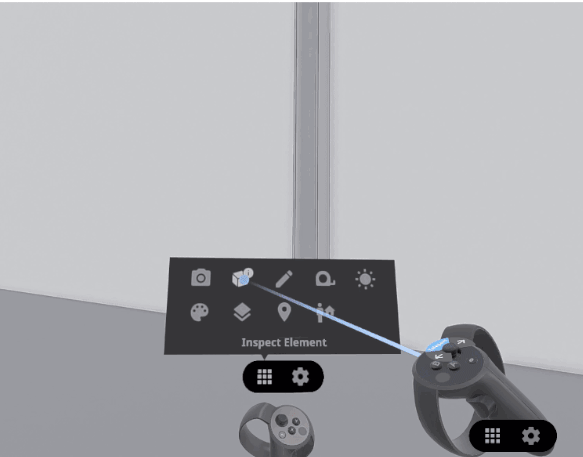Greater integration of BIM metadata into virtual reality environments should result from the latest update to the IrisVR system Prospect.
Prospect is used for collaborative design review by some of the largest AEC firms in Europe and version 2.5 enables users to automatically import and visualise BIM properties associated with elements in a Navisworks model in VR.
Select any element while in VR, with the Inspect Element tool, and BIM properties, such as materials, manufacturer data, budget or construction phasing information, are visualised in a menu.
Shane Scranton, co-founder and CEO of IrisVR, told BIM+: “Our latest release is the first technology to provide lossless data conversion to VR, which is crucial for teams that need access to, for example, the structural grid ID, the model phase, or the material properties of an object during a model coordination or clash detection meeting in VR. Other VR solutions lack the ability to present the data behind the model, which limits decision making.”
The update provides support for physically-based materials, introduced in Revit 2019, to ensure highly realistic VR environments, and post-processing effects help smooth out in-VR experiences.
A new Account Portal improves access for multiple users by allowing different roles within a team to be assigned, subscriptions can be managed, workstation keys created and colleagues can be invited to use Prospect.

The installer for Prospect 2.5 automatically detects design modeling software and offers control over plugin installation. Support has been added for Sketchup 2019 and, to improve navigation through models with numerous glass surfaces, a toggle makes it possible to turn off the automatic “teleport through glass” feature.
Plans are afoot to expand the system’s capabilities even further, says Scranton: “We saw lots of success with VR meetings, and now we’re diving deeper into model review. In the short term, you can expect more advanced ways to document notes and track issues, we’re also working on ways to make the whole experience more accessible to users without a high-end PC.”
Support for IFC and Solibri Model Checker, two of IrisVR’s most requested formats, are likely to be added in future. Meanwhile, users are invited to submit their specific feature requests to [email protected] and the team will add them to the development plan.
US contractor Gilbane was an early adopter of Prospect. Rawle Sawh, director of VDC, commented: “IrisVR Navisworks plugin is a game-changer. Construction models in VR in a matter of minutes. Awesome integration and even easier to use… Prospect helps our project teams better understand installation and sequencing requirements for complex spaces, and our designers can understand the impact of coordination issues and site constraints.”
New York-based SHoP Architects has set up a “VR cave” at the centre of its office to, among other things, improve client communication, reduce time spent in design review, and cut its paper waste.
According to comments from a spokesperson at the practice posted on the IrisVR website, the key benefit of the system has been to speed up design decision making. “You can’t hide scale in a simulation, you can’t misunderstand a space. So, designers can get in there and say with great confidence, ‘It’s A, not B’, or, ‘I like this one, not that one’.”
IrisVR has also improved communications with clients, said the spokesperson: “When you get all the barriers to understanding a space out of the way, it just really expedites communication and erases any lingering doubt.
“It follows that we can also take bigger risks now with some clients, proposing a complex space or effect, knowing that they’ll have a chance to really see and understand exactly what we’re proposing.”















